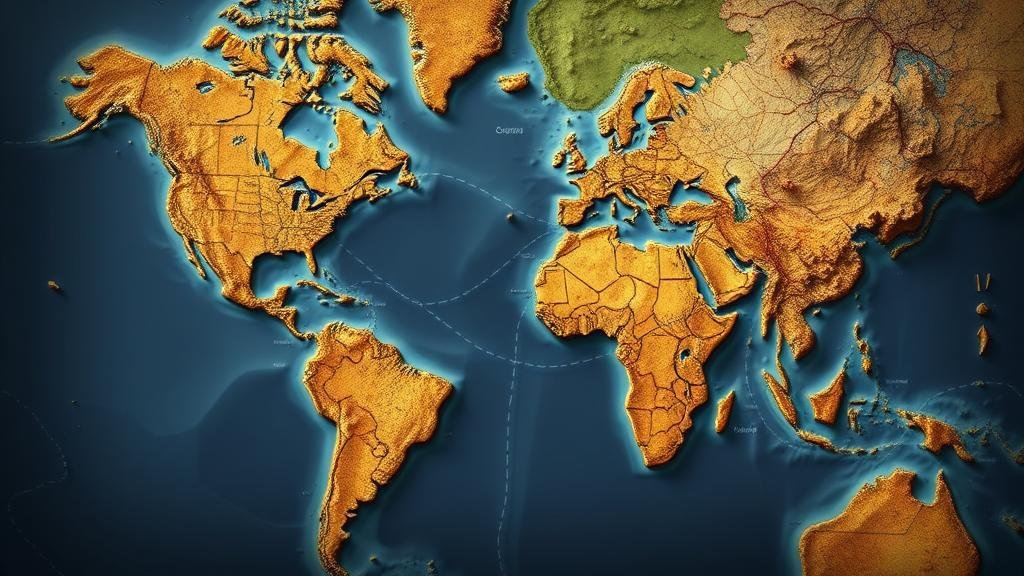Studying Ancient Trade Routes for Clues to Lost Artifacts and Gems
Studying Ancient Trade Routes for Clues to Lost Artifacts and Gems
The study of ancient trade routes has emerged as a field of profound significance in archaeology, cultural studies, and historical economics. Understanding these routes is not merely about tracing the movement of goods; it is also about uncovering the artifacts and gems that may have been lost or buried along the way. This article explores how ancient trade routes can lead to the discovery of lost artifacts and gems, supported by specific examples, statistics, and the methodologies used in this field of research.
The Importance of Ancient Trade Routes
Ancient trade routes were vital arteries of culture, commerce, and communication. Routes such as the Silk Road, which spanned approximately 4,000 miles from China to Europe, not only facilitated trade but also the exchange of ideas and technologies. According to a study published by the International Journal of Historical Studies, the Silk Road played a crucial role in the dissemination of luxury goods, such as silk, spices, and precious stones, whose origins are still being uncovered today.
- The Silk Road (circa 130 BCE – 1453 CE) connected the East to the West, leading to cross-cultural interactions.
- The Incense Route primarily operated around 3,000 BCE, linking Arabia to the Mediterranean and allowing the transport of frankincense and myrrh.
Methodologies for Studying Ancient Trade Routes
The methodologies employed in studying ancient trade routes include a combination of archaeological fieldwork, historical analysis, and the use of advanced technologies such as Geographic Information Systems (GIS). Archaeologists may perform systematic surveys, excavating known trading posts or junctions where ancient goods could have been exchanged.
For example, archaeological efforts in the ancient city of Petra, Jordan, have revealed numerous artifacts that indicate its role as a crucial trading hub. Excavations revealed gems, such as lapis lazuli and carnelian, which are believed to have originated in the Indian subcontinent and were traded extensively along these routes. The significance of these findings is underscored by their connection to historical texts, such as the writings of Strabo, who documented trade routes around 20 BCE.
Case Studies of Lost Artifacts and Gems
Several lost artifacts and gems have been rediscovered through the study of ancient trade routes. A historical case involves the discovery of Roman glassware in sites along the Incense Route. In 2022, archaeologists found fragments of this glass in the ruins of Mamshit, Israel, providing evidence of long-distance trade between the Roman Empire and South Arabian states.
Another significant find occurred in 2010 in the Taklamakan Desert, where a cached collection of treasures, including gold jewelry and agate beads, was unearthed, believed to have belonged to traders who perished along the route approximately 1,200 years ago. The analysis of such artifacts can provide insights into the socio-economic conditions of the trade networks at the time.
Technological Advances in Artifact Recovery
Technological advancements, particularly in non-invasive survey techniques such as ground-penetrating radar (GPR) and drone technology, have revolutionized our approach to studying ancient trade routes. These technologies allow researchers to locate potential sites without disturbing the archaeological context.
According to a report from the Archaeological Institute of America published in 2021, GPR has enabled the identification of subsurface features in historical trade hotspots, leading to targeted excavations that have unearthed valuable artifacts previously thought lost. This approach has been successfully employed in sites across the Mediterranean and Near East, yielding rich finds that corroborate historical trade documentation.
Conclusion and Implications for Future Research
Studying ancient trade routes is integral to understanding the movement of goods, culture, and technology in historical contexts. The clues left by lost artifacts and gems not only enhance our knowledge of commerce in ancient civilizations but also provide a deeper appreciation of the interconnectedness of human societies before the modern era. Continued research in this field, supported by technological advancements, promises to yield further discoveries that could reshape our understanding of economic and cultural exchange in antiquity.
As this field of study progresses, future researchers are urged to adopt interdisciplinary approaches, collaborating across archaeology, history, and technological fields to maximize the potential of discoveries that lie hidden, yet tantalizingly close, beneath the surface of our ancient world.



